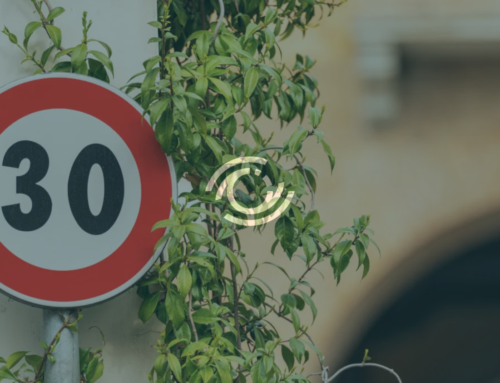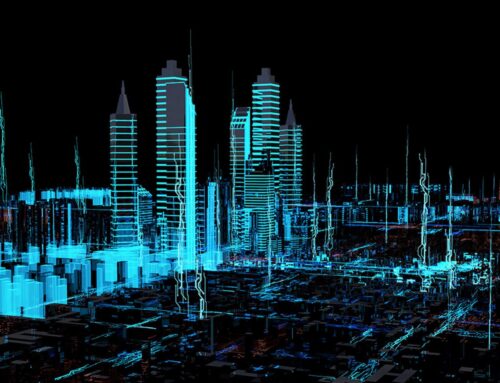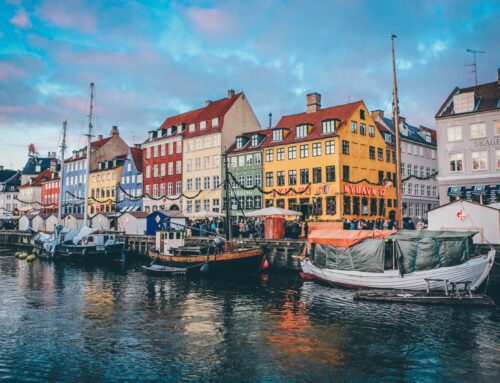Plastic, the invisible enemy: smart city and AI will take it down
The oceans are overrun with plastic, but smart cities and AI projects can finally help the oceans shine. How is it possible?
Plastic, the invisible enemy: smart city and AI will take it down
The oceans are overrun with plastic, but smart cities and AI projects can finally help the oceans shine. How is it possible?
Smart cities and artificial intelligence projects can help rid oceans of plastic waste. Here we explain them.
Plastic pollution: as invisible as it is widespread everywhere
Pollution is a plague that affects the entire world.
Most often we tend to talk only about air pollution. Plastic pollution is now also one of the most pressing environmental issues. This type of pollution is ubiquitous, but it is still most evident in Asia and Africa. Here, waste collection systems are often inefficient or even nonexistent.
How did it all come about?
After World War II there was an exponential increase in the production and development of thousands of plastic products. In addition, the advantages of plastic have led to a disposable culture that does not benefit the environment. In theory, plastic bags, for example, have a lifespan of a few minutes or hours. Basically they remain in the environment for hundreds of years.
This problem concerns the entire planet and in particular the oceans. According to data published by WWF, about 8 million tons of plastic waste end up in the oceans each year. [1]

Once found in the oceans, plastic waste is degraded by weathering into tiny particles, so-called microplastics. These have been found everywhere, including in water systems that supply drinking water.
A recent study conducted by scientists at Newcastle University found that every week, we ingest five grams of plastic. [2]
Plastic primarily affects wildlife. Again according to WWF, about 700 species have been affected in some way by plastic.
Given this, what will happen in a few years?
Certainly as the population increases, the demand for plastic products will also increase. The damage to the environment is imaginable and worse.
How will this situation be handled? It is necessary to act already today so that it is not too late and there is no turning back.
For a smart environment we need a smart and sustainable city
Once again it all comes down to how cities are run. The current system has proven to be unable to deal with the situation properly and, above all, in an environmentally friendly way.
So there is a need for change in every aspect. Here then comes the importance of the smart city, a city that is sustainable first and foremost.
As we have already discussed at length, the smart city concept rests on 6 pillars. There is smart mobility, smart people, smart living.
The latter, specifically, refers to a lifestyle based on the use of technology in a person’s life, from culture to environmental protection. Effectively, this pillar connects to another one: smart environment.
This is synonymous with sustainable development. It translates into reducing the amount of waste through separate collection. Another example is the reduction of greenhouse gas emissions by limiting traffic.
The aim is to improve the quality of the environment in cities, which combines with the goal for the planet to achieve.
Prevention for tomorrow and action for today: Smart city and AI as solutions
The waste stream we create is directly proportional to the challenges facing the global community.
We are going to present two types of projects that could really reduce the plastic pollution problem. While the first is a prevention measure for the future, the other has utility for the present.
We all know that an action plan on plastic waste can be critical to ensure a healthy global community. This is, in fact, Plastic Smart Cities, a global campaign by WWF, which started in 2018. This involves coastal cities, including Nice in France, Tangier in Morocco, with the goal of reducing plastic litter in nature by 30 percent by 2025.
In 2022, the Italian municipality of Venice has decided to participate. This city in symbiosis with the sea will also commit to eliminate the use and dispersion of plastic in the Mediterranean Sea. [3]

Let us briefly discover the four cornerstones of this ambitious project:
- Plastic waste prevention
This includes elimination of waste and pollution at the source through process changes and reuse or extended product use.
- Plastic waste collection
Waste management programs need to increase collection rates, which depend on factors including governance, population density and consumption patterns.
- Plastic reuse and recycling
This can help optimize operations and save costs, customize products to individual needs and build brand loyalty.
- Plastic monitoring and evaluation
It proves useful in allocating resources to ensure adequate collection infrastructure, but also adapt as consumption patterns evolve. [4]
Now we can present the second project. Compared to the other, what we know less about is that we can rely on Artificial Intelligence to more quickly identify the most polluted areas and take action.
Deep learning and environmental monitoring are two areas that are getting closer and closer. Indeed, the study carried out by researchers at the University of Barcelona proves the enormous potential given by this union.
They have developed an algorithm, based on convolutional neural networks, that can detect and quantify floating marine waste.
During the experiments they used 3723 images taken by drones and aircraft in the northwestern part of the Mediterranean Sea. Classification was performed through a specific application, MARLIT, based on an AI algorithm.

The algorithm detects macro-waste with an accuracy of 80% and allows measuring the density and distribution of waste in the sea. [5]
The study, started in the Mediterranean, may soon find wide use in oceans around the world and form new technologies. Moreover, many other solutions to save the oceans of the entire globe could be born from this innovation.
Thus, man has all the tools to be able to counteract the many problems that plastic causes to the environment in general. Will he be able to implement these practices successfully?
References:
-
-
- WWF. Online version: https://www.wwf.it/cosa-facciamo/mari-e-oceani/plastica/
- WWF. Online version: https://wwfint.awsassets.panda.org/downloads/plastic_ingestion_web_spreads.pdf
- WWF. Online version: https://www.wwf.it/cosa-facciamo/progetti/plastic-smart-cities/
- Plastic Smart Cities. Online version: https://plasticsmartcities.org/pages/city-action-plan
- Science Direct. Online version: https://www.sciencedirect.com/science/article/pii/S0269749121000683
-
© Copyright 2012 – 2023 | All Rights Reserved
Author: Rossana Cascione, Digital Marketing Specialist
Smart cities and artificial intelligence projects can help rid oceans of plastic waste. Here we explain them.
Plastic pollution: as invisible as it is widespread everywhere
Pollution is a plague that affects the entire world.
Most often we tend to talk only about air pollution. Plastic pollution is now also one of the most pressing environmental issues. This type of pollution is ubiquitous, but it is still most evident in Asia and Africa. Here, waste collection systems are often inefficient or even nonexistent.
How did it all come about?
After World War II there was an exponential increase in the production and development of thousands of plastic products. In addition, the advantages of plastic have led to a disposable culture that does not benefit the environment. In theory, plastic bags, for example, have a lifespan of a few minutes or hours. Basically they remain in the environment for hundreds of years.
This problem concerns the entire planet and in particular the oceans. According to data published by WWF, about 8 million tons of plastic waste end up in the oceans each year. [1]

Once found in the oceans, plastic waste is degraded by weathering into tiny particles, so-called microplastics. These have been found everywhere, including in water systems that supply drinking water.
A recent study conducted by scientists at Newcastle University found that every week, we ingest five grams of plastic. [2]
Plastic primarily affects wildlife. Again according to WWF, about 700 species have been affected in some way by plastic.
Given this, what will happen in a few years?
Certainly as the population increases, the demand for plastic products will also increase. The damage to the environment is imaginable and worse.
How will this situation be handled? It is necessary to act already today so that it is not too late and there is no turning back.
For a smart environment we need a smart and sustainable city
Once again it all comes down to how cities are run. The current system has proven to be unable to deal with the situation properly and, above all, in an environmentally friendly way.
So there is a need for change in every aspect. Here then comes the importance of the smart city, a city that is sustainable first and foremost.
As we have already discussed at length, the smart city concept rests on 6 pillars. There is smart mobility, smart people, smart living.
The latter, specifically, refers to a lifestyle based on the use of technology in a person’s life, from culture to environmental protection. Effectively, this pillar connects to another one: smart environment.
This is synonymous with sustainable development. It translates into reducing the amount of waste through separate collection. Another example is the reduction of greenhouse gas emissions by limiting traffic.
The aim is to improve the quality of the environment in cities, which combines with the goal for the planet to achieve.
Prevention for tomorrow and action for today: Smart city and AI as solutions
The waste stream we create is directly proportional to the challenges facing the global community.
We are going to present two types of projects that could really reduce the plastic pollution problem. While the first is a prevention measure for the future, the other has utility for the present.
We all know that an action plan on plastic waste can be critical to ensure a healthy global community. This is, in fact, Plastic Smart Cities, a global campaign by WWF, which started in 2018. This involves coastal cities, including Nice in France, Tangier in Morocco, with the goal of reducing plastic litter in nature by 30 percent by 2025.
In 2022, the Italian municipality of Venice has decided to participate. This city in symbiosis with the sea will also commit to eliminate the use and dispersion of plastic in the Mediterranean Sea. [3]

Let us briefly discover the four cornerstones of this ambitious project:
- Plastic waste prevention
This includes elimination of waste and pollution at the source through process changes and reuse or extended product use.
- Plastic waste collection
Waste management programs need to increase collection rates, which depend on factors including governance, population density and consumption patterns.
- Plastic reuse and recycling
This can help optimize operations and save costs, customize products to individual needs and build brand loyalty.
- Plastic monitoring and evaluation
It proves useful in allocating resources to ensure adequate collection infrastructure, but also adapt as consumption patterns evolve. [4]
Now we can present the second project. Compared to the other, what we know less about is that we can rely on Artificial Intelligence to more quickly identify the most polluted areas and take action.
Deep learning and environmental monitoring are two areas that are getting closer and closer. Indeed, the study carried out by researchers at the University of Barcelona proves the enormous potential given by this union.
They have developed an algorithm, based on convolutional neural networks, that can detect and quantify floating marine waste.
During the experiments they used 3723 images taken by drones and aircraft in the northwestern part of the Mediterranean Sea. Classification was performed through a specific application, MARLIT, based on an AI algorithm.

The algorithm detects macro-waste with an accuracy of 80% and allows measuring the density and distribution of waste in the sea. [5]
The study, started in the Mediterranean, may soon find wide use in oceans around the world and form new technologies. Moreover, many other solutions to save the oceans of the entire globe could be born from this innovation.
Thus, man has all the tools to be able to counteract the many problems that plastic causes to the environment in general. Will he be able to implement these practices successfully?
References:
-
-
- WWF. Online version: https://www.wwf.it/cosa-facciamo/mari-e-oceani/plastica/
- WWF. Online version: https://wwfint.awsassets.panda.org/downloads/plastic_ingestion_web_spreads.pdf
- WWF. Online version: https://www.wwf.it/cosa-facciamo/progetti/plastic-smart-cities/
- Plastic Smart Cities. Online version: https://plasticsmartcities.org/pages/city-action-plan
- Science Direct. Online version: https://www.sciencedirect.com/science/article/pii/S0269749121000683
-
© Copyright 2012 – 2023 | All Rights Reserved
Author: Rossana Cascione, Digital Marketing Specialist













Leave A Comment